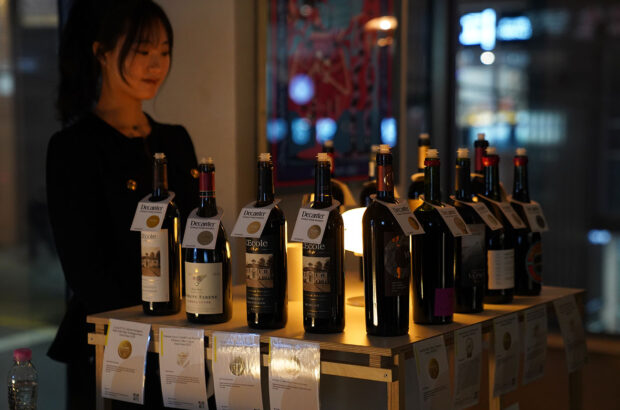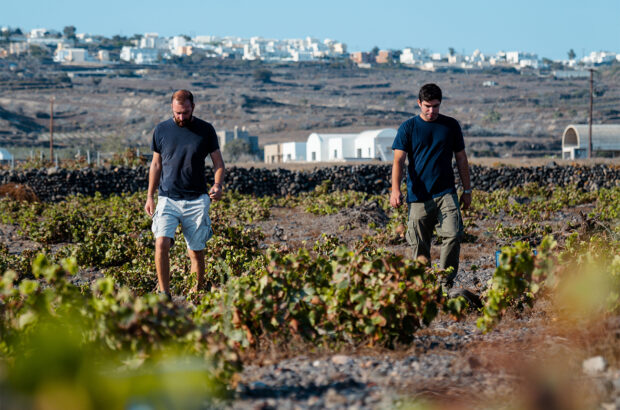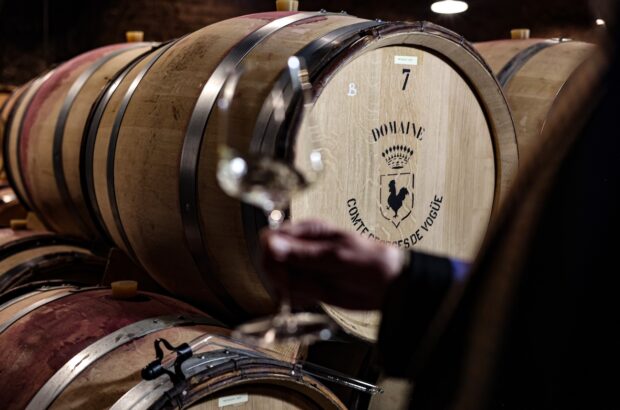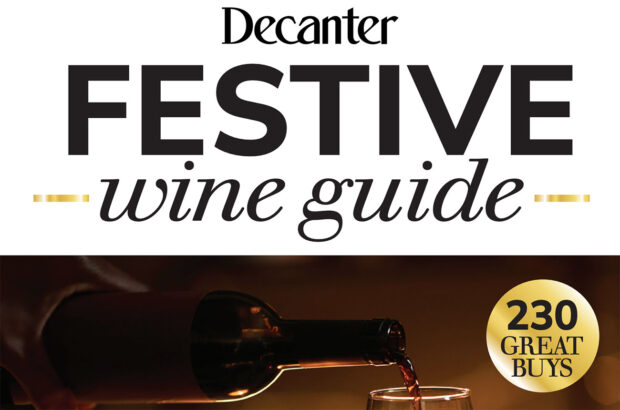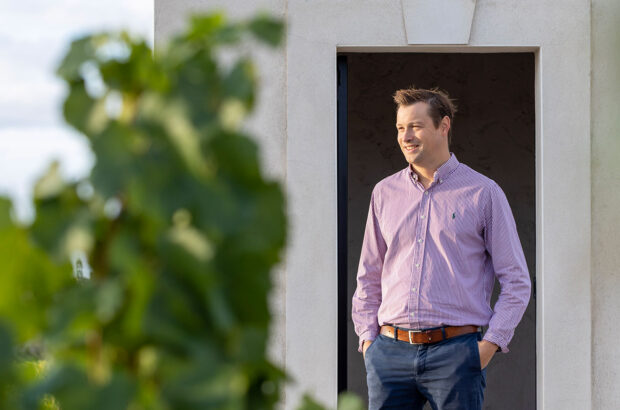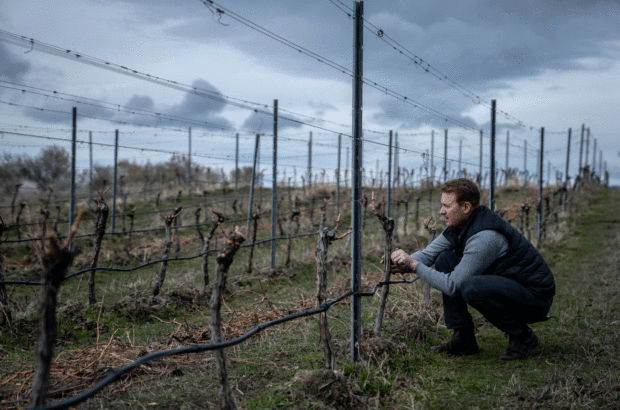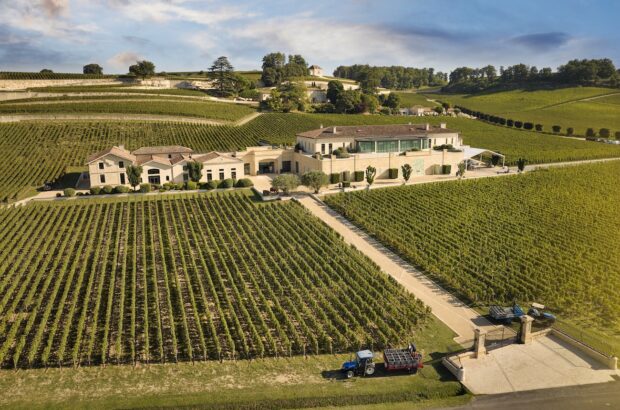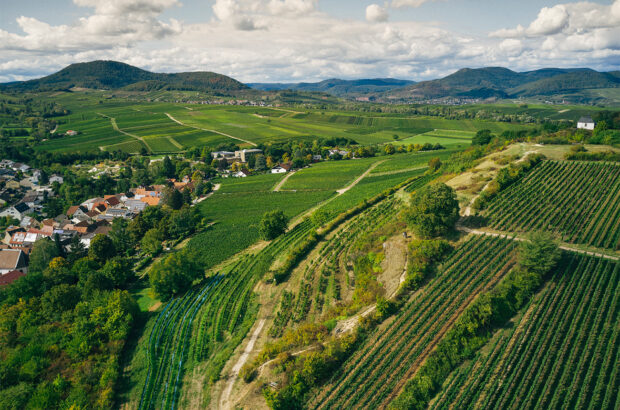Hot wine is murder. Beyond 22°C, wine begins to fall apart. Touch 25°C and it’s game over: the wine has become soup. Where my family and I live in Languedoc, it’s 25°C or more for five months a year – so between April and October, all wines go into the fridge. (We keep our fridge at 7°C in summer.) Between November and March, all the wines go outside the front door; we have cool winters. If Jack Frost is about, I put them on the windowsill, inside the exterior blinds.
Yes, you’re right: this means that the day’s first glass of red wine will often be chilled. For lighter red wines, a mid-chill (14°C) is optimal. For dense reds, some might feel a chill is sub-optimal – but in winter, our main room is at 19°C and in summer it may be 30°C or more, so the wine quickly warms.
I love to track the changes in wines as they warm, but if 19°C is the desideratum, I pull the bottle out of the fridge an hour earlier. Red-wine aromas, it’s true, tend to be most articulate at somewhere between 16°C and 20°C.
Storing opened wines in the cold gives them a further lease of life. I’m too lazy to use wine-preservation systems, but most wines last at least three days without deterioration, served from the fridge and put straight back into it. What we drink at home, meanwhile, changes surprisingly little with the seasons: yes, summer is hot, but I still love great red wine for food, with all its textured intrigue, and to serve red wine cool adds to its refreshment value. The fridge is my friend.
Andrew Jefford
Decanter Contributing Editor & DWWA Co-Chair (southern France)

Château de Malle, Sauternes 2018
I always store a half-bottle of Sauternes in the fridge waiting for special occasions: it’s the most luxurious aperitif in existence, and it needs a significant chill. Just now we’re drinking halves of Château de Malle 2018: lush, honeyed, succulent, voluptuous, with almost buttery flavours but sustaining lemony acidity, too.
Another of our fridge favourites, believe it or not, is serious Madiran – France’s greatest red-wine bargain. I’ve just pulled the Domaine Berthoumieu, Cuvée Charles de Batz 2017 (currently US$24-$30 at various retailers around California) out of the fridge and poured a chilled glass. The fruit qualities of structured reds of this sort are prominent when chilled, while the tannins are firm and shapely. As the wine warms, the tannins become broader and more expansive; the savoury qualities that lie in the wine’s recesses begin to engage and unfold. Aromatically, too, the sloe and damson of the cool bottle is replaced by something a little smokier and earthier. For all that, I prefer to drain the glass while the wine is still a little cool, rather than seeing it move past 19°C: it seems racier and pacier that way to me.
Katherine Cole
Wine communicator, author, podcast host and Decanter columnist (US west coast)

A selection of wines on ice in Katherine’s Yeti ice chest
A parade of refreshing rosé and sparkling wines rotates through my refrigerator door all summer. At the moment, I’m enjoying the Filipa Pato & William Wouters, 3B Rosé Extra Bruto NV (£21 Clark Foyster, Hedonism), a Portuguese bubbly made from biodynamically grown Baga and Bical grapes, with delicious sour plum notes. Next up, Bénédicte et Stéphane Tissot’s Crémant du Jura Rosé Extra Brut NV (US$30-$42 Widely available), a savoury blend of Pinot Noir, Poulsard and Trousseau.
But with friends stopping by frequently to tipple on my riverfront terrace, my fridge door tends to runneth over. That’s when I turn to my all American auxiliary wine cellars: two oversized Yeti ice chests (eg, the Tundra 125 model, which can hold 58kg of ice, at £550/US$600). Designed for rugged adventurers (and certifiably bear-proof), my cheerful blue coolers are rarely used for beach picnics or mountain jaunts. More often, I fill a Yeti with ice and set it out on my terrace for entertaining. I’ve currently got some swoon-worthy Oregon faves – Lytle-Barnett, Blanc de Blancs Brut (2019, US$75-$79 Lytle-Barnett, Total Wine & More); Soter, Mineral Springs Rosé Brut (2019, US$80-$88 Harry’s, Jersey Wine & Spirits, MrD, San Francisco Wine Trading Co, Wine Watch); and Corollary, Momtazi Vineyard Carbonic Rosé Extra Brut (2021, US$70 Corollary Wines) – ready in the Yeti.
Olly Smith
Food and drink author, broadcaster and podcast host (southern England)

Olly’s Eto decanter
My fridge is never without fino Sherry. I still believe it’s the greatest fine wine for fun wine prices; a year-round staple is Tio Pepe Fino. In summer, I change gear to the richer Tio Pepe, Fino En Rama (2025 release, £19-£21.50 Amps, Lea & Sandeman, Noble Grape, Soho Wine Supply, Tanners, The Wine Society). Hazy, powerfully refreshing (think camomile and lemon wedges) and quick to open with its cork stopper, it’s always within nibbling distance of a bowl of green olives for rapid deployment on a hot day.
Another summer all-star is Domaine Tempier, Bandol Rosé 2024 (£34.50-£45 Hedonism, Huntsworth Wine Co, Lea & Sandeman, Mayfly Wine Co, Parched, The Good Wine Shop), which always beguiles with its moreish texture and magical fragrance. I wish I had the patience to leave it in my cellar, as it has the capacity to evolve with grace, but since I find it so irresistibly scrumptious, it rarely lasts long when sunbeams hit the garden.
For chilling youthful, fragrant reds, I use my Eto decanter (£130-£140 Fortnum & Mason), which keeps wine fresh for up to two weeks. For fizz, Hoffmann & Rathbone from my home county of Sussex is on hand year-round; its Classic Cuvée Brut 2015 is nothing short of stellar for any lucky neighbour who happens to drop by (£43 Hoffmann & Rathbone).
Melody Wong
Director of wine & wine buyer, The Peninsula London hotel (London)

Inama, I Palchi from Italy’s Soave region
Burgundy may not be the first region that springs to my mind when selecting a rosé; however, Domaine Sylvain Pataille, Fleur de Pinot Marsannay Rosé 2022 (£40 The Wine Society; US$80-$99 Domestique, Dunn & Sons, Grand Vin, Rue Pinard, Wine Solutions, Woodland Hills Wine Co) is definitely my exception. This old-vine, Pinot Noir-based wine is the rosé I usually bring out at garden parties to impress stubborn friends who are usually quick to reject a glass of rosé. The joy of freshness and summer berries are the first things to burst from the glass; once the wine starts to warm up, the aromas and flavours of blackcurrant jam and forest foliage, synchronised with the silky tannins, tempt me to have another quick sip before the bottle is hastily emptied. This wine brings me so much pleasure and joy. I find myself wondering why there aren’t more rosé producers in the region.
Acústic Celler’s Acústic Blanc, Montsant 2022 (£20.95-£24 Lea & Sandeman, North Norfolk Cellars) is another regular in my fridge: a Spanish gem from Catalonia. This white blend of mostly Garnacha Blanca, with Macabeu, has bright acidity and a Sherry-like savoury character. The stone fruit, peach and floral aromas are intriguing, while the balance of vibrant freshness and creamy texture surprises me every time. It’s a complex yet elegant mouthful without being overly heavy. Slip in a naughty piece of goat’s cheese with this refined white wine to treat oneself on a sunny afternoon.
Shane Jones
Independent WSET- and SSA-certified wine, Port and sake educator, and DWWA judge (London)

Domaine Sylvain Pataille, Fleur de Pinot Marsannay Rosé 2022
A fridge without a traditional-method rosé sparkling wine is not one I’d like to open. Taking up residency in mine of late is the terrific Weingut Kranz, Cabernet Sauvignon Rosé Brut (£27.95 The WineBarn) from the southern German Pfalz region. This varietal fizz is excellent value and delivers abundant pink grapefruit and red cherry fruit and very well integrated autolytic flavours of biscuit and toast, supported by that appetising German acidity.
The longest-serving fridge-mate, though, is Barbeito’s Rainwater 5 Year Old Reserva Madeira (£16.50-£20/50cl Widely available via independent merchants), which I drink year-round. In spring it’s enjoyed chilled directly from the fridge whenever I desire it; tonic becomes its friend in summer; ginger beer in autumn; and in winter, it’s thrown into sauces or enjoyed with nibbles of cheese.
My indulgent bottle at the ready is always a premium oaked white with a few years of bottle age behind it, and no, it’s not white Burgundy. I admire every bottle produced by the Inama family in Soave, in northern Italy’s Veneto region, and its superb, special selection, single vineyard I Palchi (£49.99 Taurus Wines) delivers varietal Garganega with elegance, concentration and happiness in every sip. The nutty and savoury notes underscore the undeniably long finish.



